Unlock the Magic in Your Story Now
Get the Free 20 questions to Ask Before Launching Your Idea workbook when you sign up for occasional updates.
Get the Free 20 questions to Ask Before Launching Your Idea workbook when you sign up for occasional updates.
Articles filed in: Storytelling
There’s More Than One Way To Tell Your Story
filed in Marketing, Storytelling, Strategy
 In 2004 Chanel paid $33 million for the production of a two minute film which became the most expensive advert ever made. In a post GFC economy that figure seems shocking, but Chanel is one of the most valuable global brands. They have the marketing budget and they’re not afraid to use it.
In 2004 Chanel paid $33 million for the production of a two minute film which became the most expensive advert ever made. In a post GFC economy that figure seems shocking, but Chanel is one of the most valuable global brands. They have the marketing budget and they’re not afraid to use it.
Dropbox was founded four years after the Chanel advert aired and has grown to a 300 million user base with a $10 billion valuation by using a clever referral and social sharing reward marketing strategy. Instead of paying to talk about their product Dropbox solved a problem and then rewarded happy users with extra storage when they referred friends.
In a world where social capital increasingly drives the results of companies who thoughtfully connect with their customers it’s time to ask ourselves some tough questions about how we go about influencing the people we serve.
Permission marketing and lower barriers to entry mean we have more opportunities than ever to reach people—but just because we can doesn’t mean we should. There’s a difference between having something to say and having either the opportunity or the budget to say it.
Our companies, non-profits and businesses are judged more and more not by what they sell, but by how and why they sell it. What we stand for is as much a differentiator as what we make. It turns out that there is more than one way to tell your story.
Image by Andrew Ferguson.
Who Is Your Customer?
filed in Marketing, Storytelling, Strategy
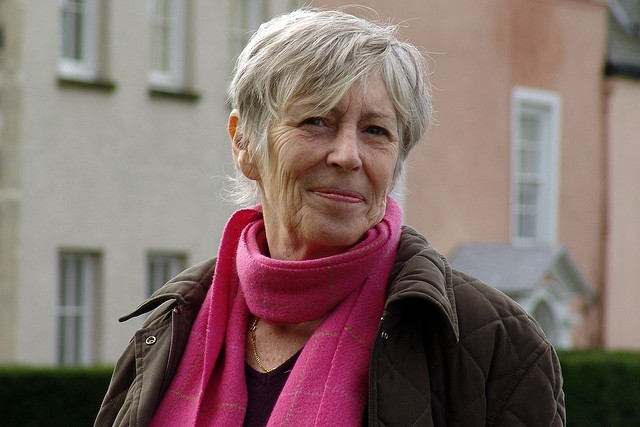 Joan works as a personal trainer at the local gym. She looks old enough to be someone’s grandma, but I don’t think she is. Unlike most women her age who live around here Joan doesn’t wear a wedding ring. She visits the same cafe for breakfast every day, but not at the same time because some days she has a client at 5.30am. On those days she goes straight to the cafe afterwards. She always eats alone, drinks a skinny latte and normally has toast. When she decides to ‘mix it up a bit’ she tells the staff she’s in the mood for a change today. She seems to struggle with her weight and wrestles with herself over whether to spread butter on her toast—some days she doesn’t.
Joan works as a personal trainer at the local gym. She looks old enough to be someone’s grandma, but I don’t think she is. Unlike most women her age who live around here Joan doesn’t wear a wedding ring. She visits the same cafe for breakfast every day, but not at the same time because some days she has a client at 5.30am. On those days she goes straight to the cafe afterwards. She always eats alone, drinks a skinny latte and normally has toast. When she decides to ‘mix it up a bit’ she tells the staff she’s in the mood for a change today. She seems to struggle with her weight and wrestles with herself over whether to spread butter on her toast—some days she doesn’t.
All of the staff at the cafe know her by name and they don’t seem to mind when she reminds them that they have forgotten to turn the music down, or the lights on. Joan doesn’t sit at the same table every day like some of the other regular customers. That tiny decision is her way of telling herself she’s not stuck in a rut. She lives close by because it’s not the kind of place people visit every day unless they have a reason to come and the cafe is not the kind of place people drive across town to experience. But then Joan is not really here for coffee and toast.
If I were the cafe owner I’d be working harder to make Joan feel like I cared that she showed up every day. I’d want to show her that she mattered.
Tell me about your customer. Not just her age, income and postcode—but tell me who she really is.
What keeps her awake at night? Where does she spend her time both online and offline? What does she care about? Tell me about her fears, hopes and dreams. What matters to her?
Tell me everything you know. Find out what you don’t.
If we don’t take the time to really see our customers and get to know their story, how can we create the things and experiences they want and need? They are giving us clues every day, we just need to open our eyes and more importantly our hearts.
Image by Charles Roffey.
Stop Selling Stuff, Start Selling Stories
filed in Marketing, Storytelling, Strategy
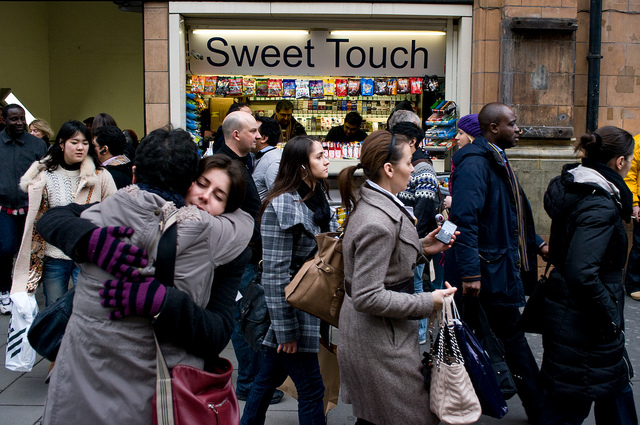 David is a genius who happens to sell for a living. I watched him sell a $150 pair of Ugg boots to a woman who had been killing time wandering through his souvenir shop with no big agenda one wet Friday afternoon.
David is a genius who happens to sell for a living. I watched him sell a $150 pair of Ugg boots to a woman who had been killing time wandering through his souvenir shop with no big agenda one wet Friday afternoon.
He began, not as many salespeople would, by asking what she was looking for and instead he asked, who she was looking for. From there questions and answers easily flowed. The age of the woman’s granddaughter. The story about how she was always asking her grandma to buy her a pair of ‘expensive fake Ugg boots back home’. The grandma’s concerns about how they might damage her feet or make them smell.
David rearranged each of her responses effortlessly, like pieces of a jigsaw puzzle into a solution. One by one he dispelled the woman’s fears and gained her trust. Then—and only then, did he reflect the story of the moment when grandma would hand the boots over to her granddaughter, in their special reusable bag that would be ‘shown off to friends at school’, back to her.
“I might even get a hug for these.” she said, as she handed over three fifty dollar notes.
And there, expressed in that single sentence was what David had already known.
The best salespeople, marketers and brands don’t actually sell us stuff they’ve made in factories or built with lines of code. They don’t even sell us things we want or need. They simply sell the story we want to live and believe back to us.
Image by Gary Jarvis.
Why Not Go First?
filed in Marketing, Storytelling, Strategy
 An article about successful disruptive businesses like Warby Parker or Square spreads like wildfire through social media channels and whole libraries could be filled with stories about what makes Apple unique. It’s natural to want to learn from the successes of others and to wonder how we can borrow a bit of their magic.
An article about successful disruptive businesses like Warby Parker or Square spreads like wildfire through social media channels and whole libraries could be filled with stories about what makes Apple unique. It’s natural to want to learn from the successes of others and to wonder how we can borrow a bit of their magic.
Following in their footsteps might seem like a shortcut, the irony being that pioneers mostly succeed by being pioneers—by doing what others don’t dare to do, because it isn’t obvious or easy.
Our biggest learnings and successes come from going first. You don’t have to be ‘the next Apple’ to create your own brand of magic.
Image by Paul Mullett.
Life After Launch Day—Introducing The One Page Marketing Plan
filed in Marketing, Storytelling, Strategy
 It’s not hard to remember the lead up to the birth of your first child. Forty weeks of sheer focus on everything from what cheese to eat—or not to eat, to a birth plan that read like a military operation. I always found it odd that there was a ten-point plan for every eventuality during the twenty hours of labour and yet we had no plan for how to navigate the next twenty years after that.
It’s not hard to remember the lead up to the birth of your first child. Forty weeks of sheer focus on everything from what cheese to eat—or not to eat, to a birth plan that read like a military operation. I always found it odd that there was a ten-point plan for every eventuality during the twenty hours of labour and yet we had no plan for how to navigate the next twenty years after that.
Giving birth to ideas is equally seductive. Thoughts about what it will feel like to see your idea (innovation, product, service, book, video, designs) in the world are what drives people to push through when the going gets tough. Often though that vision begins and ends with launch day, with most of your energy being focused on giving birth to the project.
Day one is easy to imagine—but what’s the plan for day two?
Below is a roadmap to help you start thinking about life after launch day. This is simply a template of touchpoints, it doesn’t become a plan until you begin to find answers to questions about what the future might look like. Which must be easier to predict than the first twenty years of a child’s life.
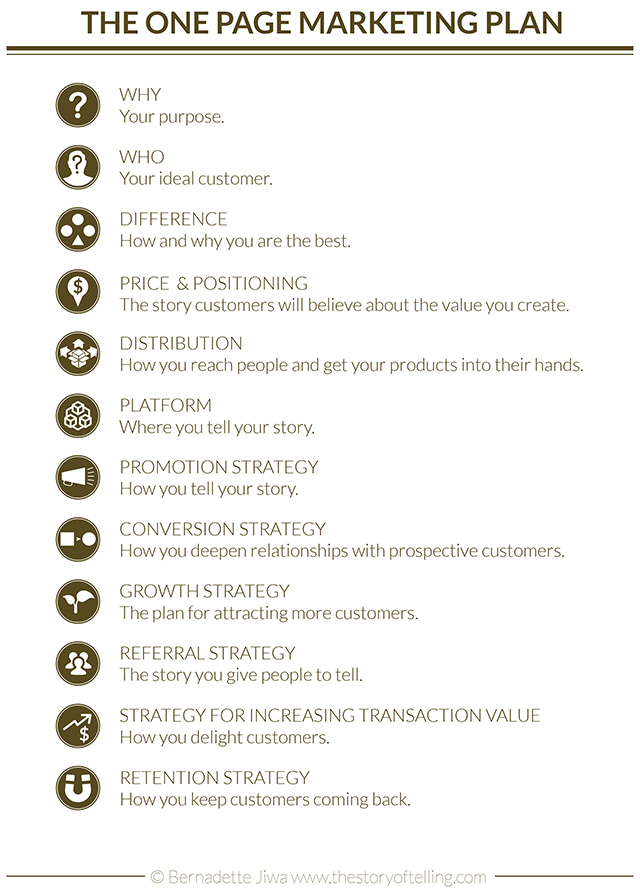
FREE PDF DOWNLOAD THE ONE PAGE MARKETING PLAN
If you get my monthly newsletter look out for The Marketing Plan Workbook next month.
Image by Chimpr.
Who Decides What Wins?
filed in Marketing, Storytelling, Strategy
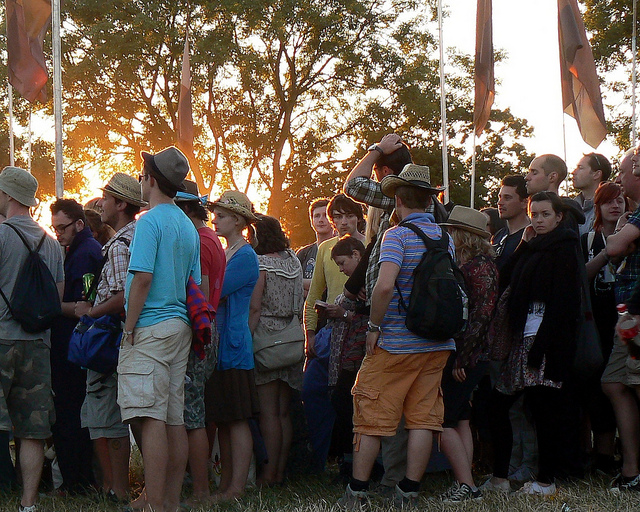 The app developer will spend hundreds of man hours writing lines of perfect code in the hope of making his final product the best in the world. The cafe owner could pull thousands of shots in order to create the perfect cup every time. The entrepreneur might invest months agonising over design decisions to launch with a more compelling website. The author can labour for years crafting perfect sentences that will surely make his book worthy of a slot on the bestseller list.
The app developer will spend hundreds of man hours writing lines of perfect code in the hope of making his final product the best in the world. The cafe owner could pull thousands of shots in order to create the perfect cup every time. The entrepreneur might invest months agonising over design decisions to launch with a more compelling website. The author can labour for years crafting perfect sentences that will surely make his book worthy of a slot on the bestseller list.
And yet—they have less control over what the people who buy their end product believe, feel, think and say than they would like to imagine. When Cadbury ‘improved’ the shape of their chocolate bars (a decision a behemoth brand would not take or implement lightly), customers pushed back.
We might know that our product really is the best in the world, but it isn’t us who gets to decide. What we do and what we ask customers to believe is only part of the story. It’s humbling to realise that the people we serve, not our technologists, publishers, innovators, designers or marketing departments decide what’s worthy and what wins.
Image by Joe.
How To Write Your Mission Statement And 20 Great Mission Statements To Inspire You
filed in Marketing, Storytelling, Strategy
 Have you ever noticed how we tie ourselves up in knots and overcomplicate things when we put our business hats on? Your mission statement doesn’t need to be long and complex, it’s simply a promise—your statement of intention.
Have you ever noticed how we tie ourselves up in knots and overcomplicate things when we put our business hats on? Your mission statement doesn’t need to be long and complex, it’s simply a promise—your statement of intention.
A mission statement needs to clarify the answers to the following two questions:
What do you do? What happens because you exist?
As you can see from the examples of mission statements below you don’t need to be long winded, often a single sentence is enough to say what you need to say.
20 GREAT MISSION STATEMENTS
WARBY PARKER
To create boutique-quality, classically crafted eyewear at a revolutionary price point.
TED.COM
Spread ideas.
INSTAGRAM
To capture and share the world’s moments.
PATAGONIA
Build the best product, cause no unnecessary harm, use business to inspire and implement solutions to the environmental crisis.
TWITTER
Instantly connect people everywhere to what’s most important to them.
UBER
Make transportation as reliable as running water, everywhere, for everyone.
ADOBE
Move the web forward and give web designers and developers the best tools and services in the world.
GOOGLE
Organize the world’s information and make it universally accessible and useful.
GO PRO
To help people capture and share their lives’ most meaningful experiences with others—to celebrate them together.
STARBUCKS
Inspire and nurture the human spirit – one person, one cup and one neighbourhood at a time.
NEST
To keep people comfortable in their homes while helping them save energy,
AMAZON
To be Earth’s most customer-centric company.
NIKE
To bring inspiration and innovation to every athlete in the world.
AIRBNB
To build a community-driven hospitality company.
INNOCENT JUICES
We’re here to make it easy for people to do themselves some good (whilst making it taste nice too).
LEGO
Inspire and develop the builders of tomorrow.
FACEBOOK
To make the world more open and connected.
JAMIE OLIVER
Help as many people as possible eat better food and live a better life.
VIRGIN ATLANTIC
To embrace the human spirit and let it fly.
OCADO
To establish the first new supermarket in a generation.
So, why does your business exist?
Image by Bjørnar E.
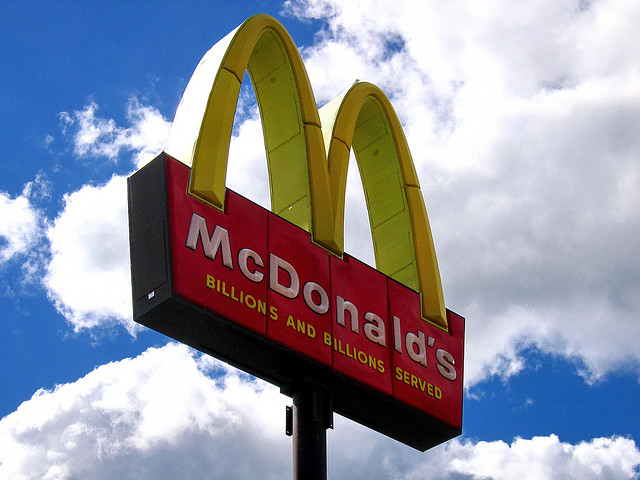 All around us big vanilla businesses and corporations are struggling to understand how to connect with customers and give people what they want. Businesses like McDonalds are
All around us big vanilla businesses and corporations are struggling to understand how to connect with customers and give people what they want. Businesses like McDonalds are 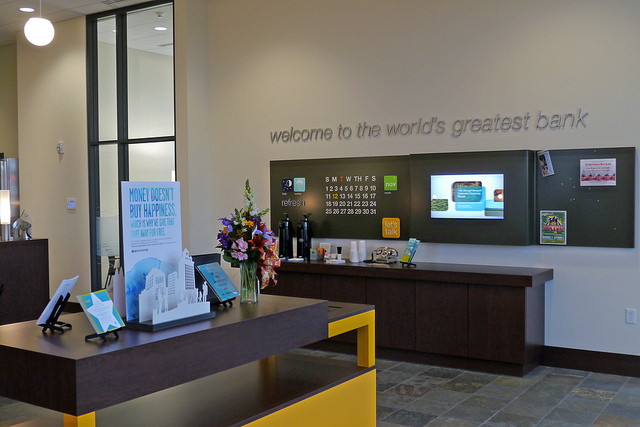 Having a competitive advantage is not just about being better in ways that can be measured, it’s about
Having a competitive advantage is not just about being better in ways that can be measured, it’s about  I arranged to meet one of my Twitter friends for the first time in the little bar at the front of my hotel. He is a designer from London and as luck would have it we were visiting New York at the same time, (something we discovered through our simultaneous posts of Times Square on Instagram).
I arranged to meet one of my Twitter friends for the first time in the little bar at the front of my hotel. He is a designer from London and as luck would have it we were visiting New York at the same time, (something we discovered through our simultaneous posts of Times Square on Instagram).